Southwest Airlines is in the process of transforming its business model, under financial pressure from activist investors. The airline is changing just about everything, and has started charging for checked bags, adding basic economy, expiring travel credits, and more.
In July 2024, Southwest announced plans to introduce assigned and premium seating on flights, ending the carrier’s decades-old policy of having open seating. This feature has now been implemented for flights as of early 2026, so we have our first look at what pricing will be like…
Southwest overhauls its seating policies
Southwest Airlines is introducing both assigned seating and premium seating. This new seating policy kicks in for flights as of January 27, 2026, with tickets under this new system now being on sale.
Southwest has already started reconfiguring aircraft with extra legroom seating, since obviously that can’t happen overnight. So while customers may already find themselves on planes with this new layout, the extra fees for the new model only apply for flights as of early 2026.
With the airline moving to a new seating model, all seats will be assigned, and over time, roughly one-third of seats across the fleet will offer extra legroom. As Southwest reconfigures jets, how will the layouts change? There will be three seating types:
- Extra legroom seats will be those at the front of the cabin, with extra legroom, as well as at exit rows
- Preferred seats will be those right behind the seats with extra legroom, and in front of the exit rows
- Standard seats will be those behind the exit row
For example, below is a seat map of the updated Southwest 737-800 and 737 MAX 8 configuration.
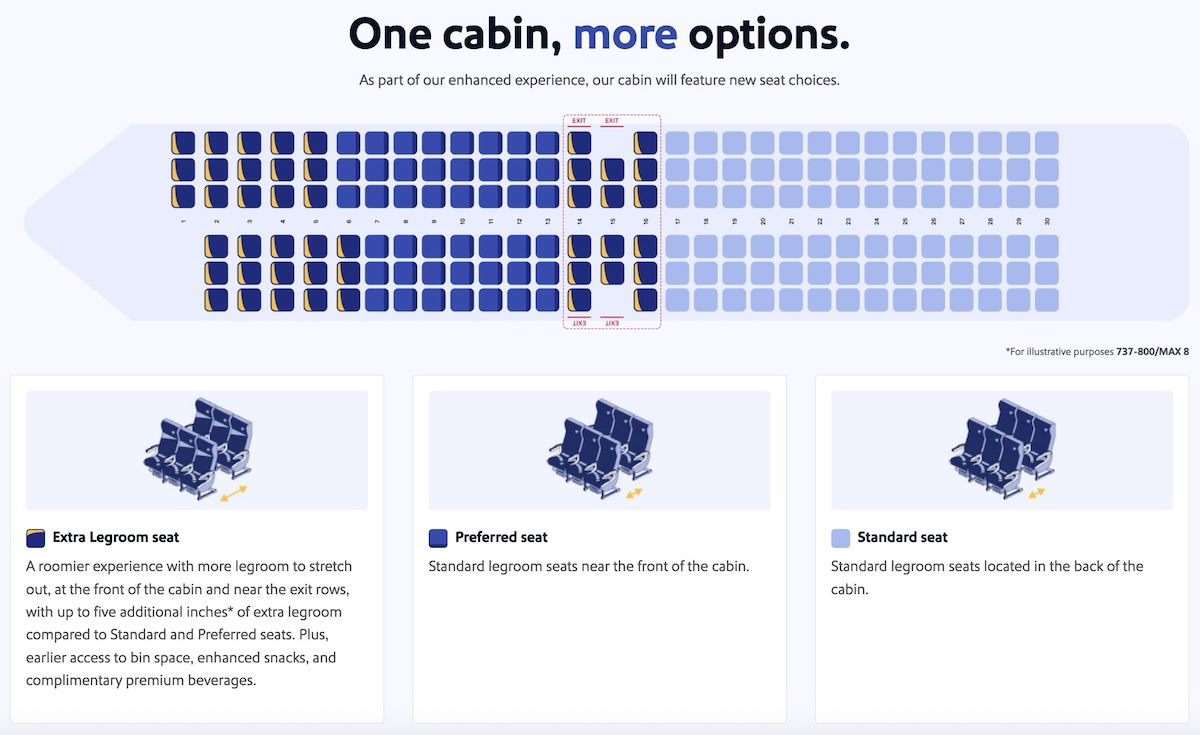
The expectation is that Southwest’s extra legroom seats will have 34″ of pitch, while standard seats will have 31″ of pitch. Essentially, 737-800s and 737 MAX 8s will have legroom reduced by 1″ for standard seats, in order to be able to add more legroom for other seats.
As you’d expect, Southwest Rapid Rewards A-List members and co-brand credit card members receive certain seating perks. The airline is also transforming its boarding process, with eight groups.
Southwest has been known for its unique open seating model for more than 50 years, but the airline believes that consumer preferences have evolved, with more customers taking longer flights, where a seat assignment is preferred.
Southwest claims that according to its research, 80% of Southwest customers and 86% of potential customers prefer an assigned seating concept. When a customer elects to stop flying with Southwest and chooses a competitor, open seating is cited as the number one reason for that.
With this change, Southwest believes it will broaden its appeal and attract more flying from its current and future customers. The airline states that this is part of the overall modernization efforts at the airline, and complements plans to introduce faster Wi-Fi, in-seat power, larger overhead bins, and more.
Here’s how Southwest CEO Bob Jordan described these seating changes, back when they were first announced:
“Moving to assigned seating and offering premium legroom options will be a transformational change that cuts across almost all aspects of the Company. Although our unique open seating model has been a part of Southwest Airlines since our inception, our thoughtful and extensive research makes it clear this is the right choice— at the right time—for our Customers, our People, and our Shareholders. We are excited to incorporate Customer and Employee feedback to design a unique experience that only Southwest can deliver. We have been building purposefully to this change as part of a comprehensive upgrade to the Southwest experience as we focus on Customer expectations – and it will unlock new sources of revenue consistent with our laser focus on delivering improved financial performance.”

Southwest assigned & premium seating pricing
With Southwest Airlines’ assigned and premium seating now live, what’s pricing like? To take a look, I pulled up an early 2026 flight from Tampa (TPA) to Fort Lauderdale (FLL), which is one of the carrier’s shorter routes.
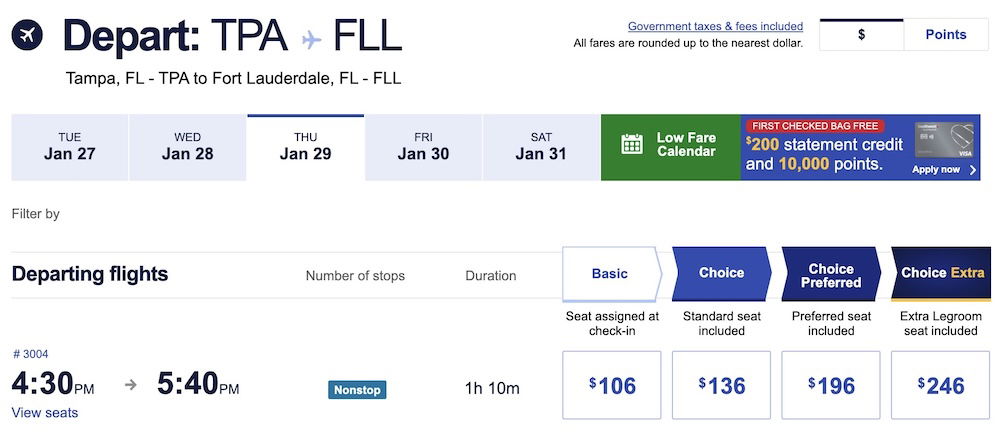
When booking the cheapest basic fare, seat assignments are only offered at check-in. Interestingly, you can’t even pay for a standard seat, but you can pay for a premium seat. The preferred seats range in cost from $23-26, while the extra legroom seats range in cost from $38-41.
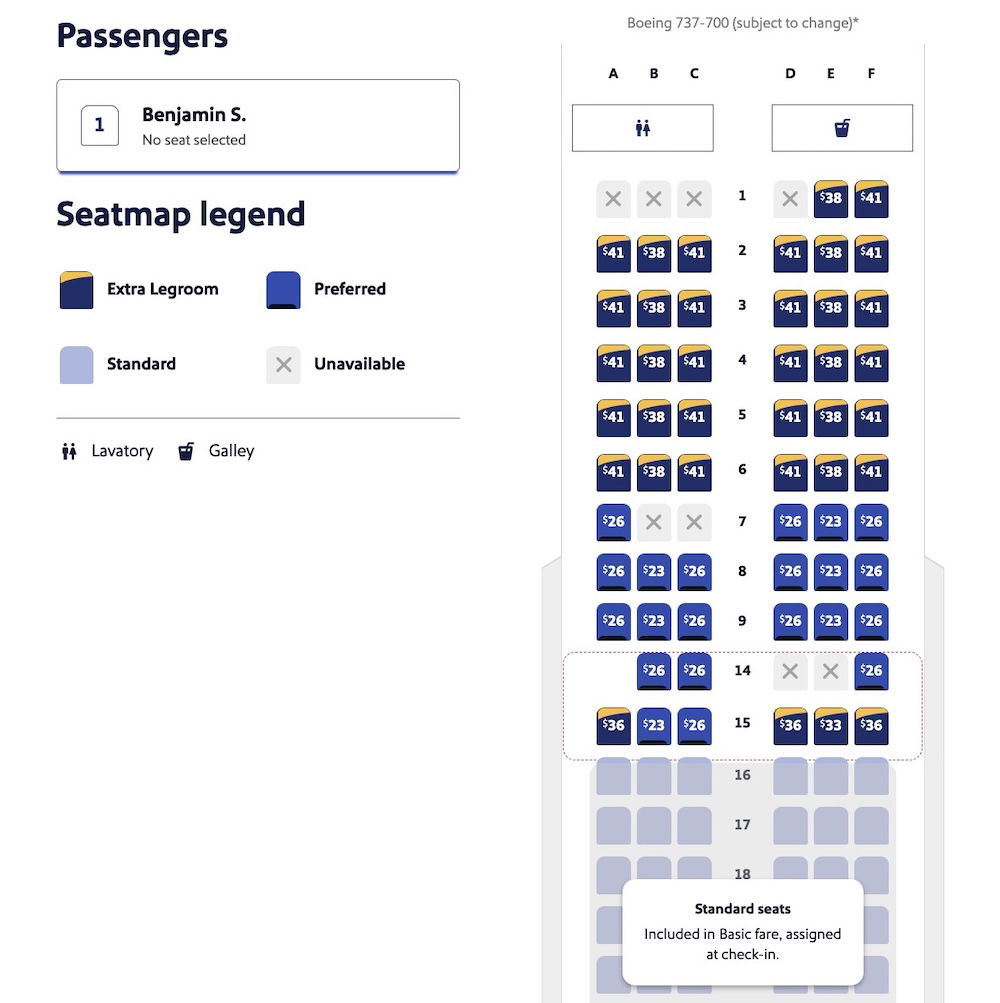
I then pulled up an early 2026 flight from Baltimore (BWI) to Los Angeles (LAX), which is one of the carrier’s longer routes.
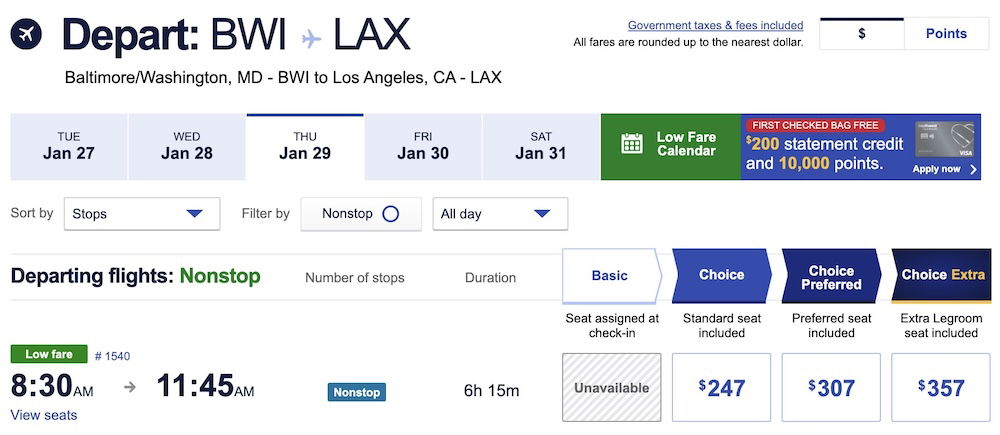
When booking the cheaper choice fare (basic fares weren’t available), standard seat selection was included. The preferred seats range in cost from $36-41, while the extra legroom seats range in cost from $83-91.
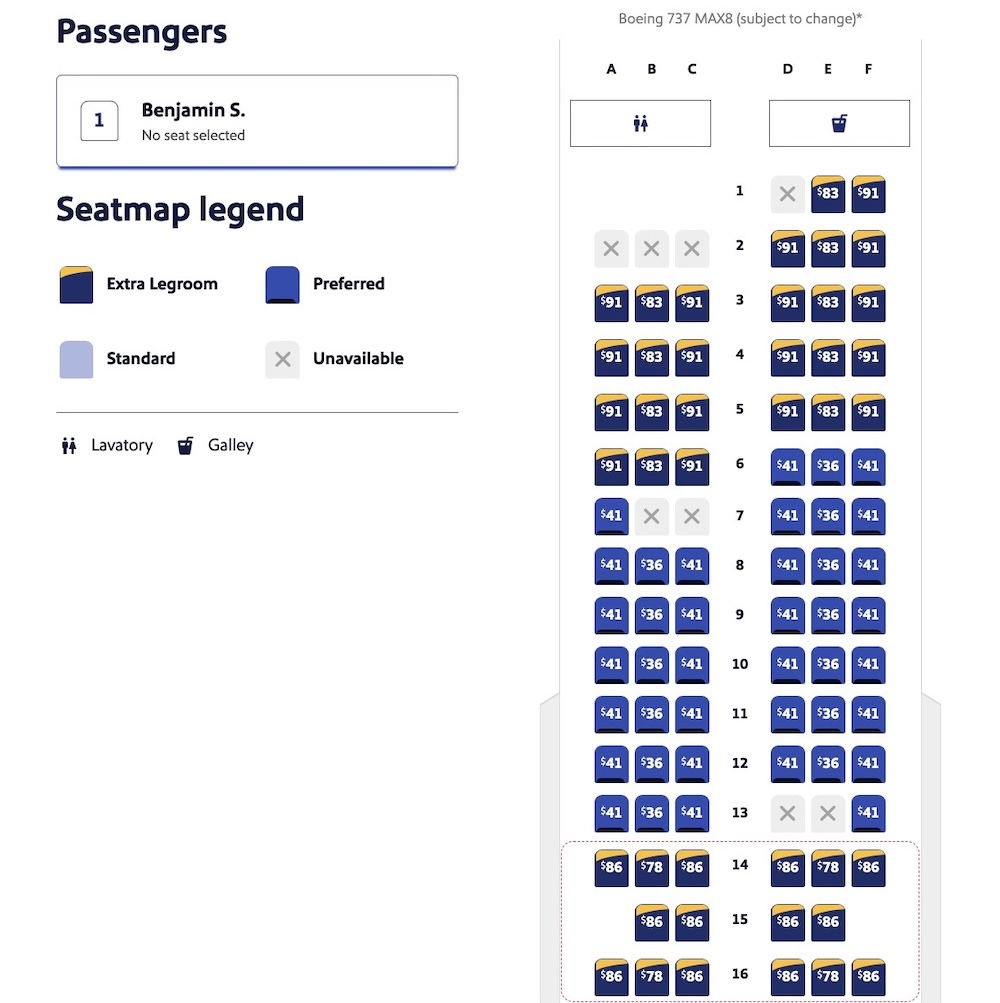
As you can tell, this pricing is dynamic, and will vary over time, I imagine. The thing that initially stands out to me the most is how little the pricing differs within each section, and between aisle seats and middle seats. I imagine that will change over time, to reflect consumer behavior.
One other thing that stood out to me is that the whole Southwest booking process now feels a lot more like booking with an ultra low cost carrier. There are lots of upsell opportunities, questions about whether you’re sure you don’t want to upgrade your fare type, etc.
These Southwest changes were inevitable
I don’t think it should come as a surprise to anyone that Southwest Airlines is finally updating its onboard seating model.
For decades, Southwest was one of the most profitable US airlines, but the carrier has lost its financial edge, as consumer travel patterns have shifted (for that matter, the industry has shifted more fundamentally). Southwest isn’t able to capitalize on the premium travel boom, plus the demand for long haul travel. The airline also hasn’t been able to generate as much ancillary revenue as competitors, which is a major source of profits for airlines.
So over the past year or so, we’ve seen Southwest management essentially take an axe to the carrier’s business model and passenger experience. Now, as far as Southwest’s changes go, I actually think introducing assigned and extra legroom seating is among the more sensible updates we’re seeing. Assigned seating is much easier to monetize, and also less frustrating for many passengers, since they know exactly what they’re going to get.
As far as premium seating goes, that also makes perfect sense. In early 2024, Southwest unveiled new cabins, which are being installed on newly delivered aircraft. What’s interesting is that these seats are thinner than previous seats, yet Southwest claimed from the beginning that it wouldn’t increase the number of seats on planes. So it also makes sense that we’re seeing the introduction of seats with extra legroom.
Airlines aren’t charities (even if their balance sheets may at times suggest otherwise), so it makes sense that Southwest would try to monetize the extra space, and change the cabin layout a bit.
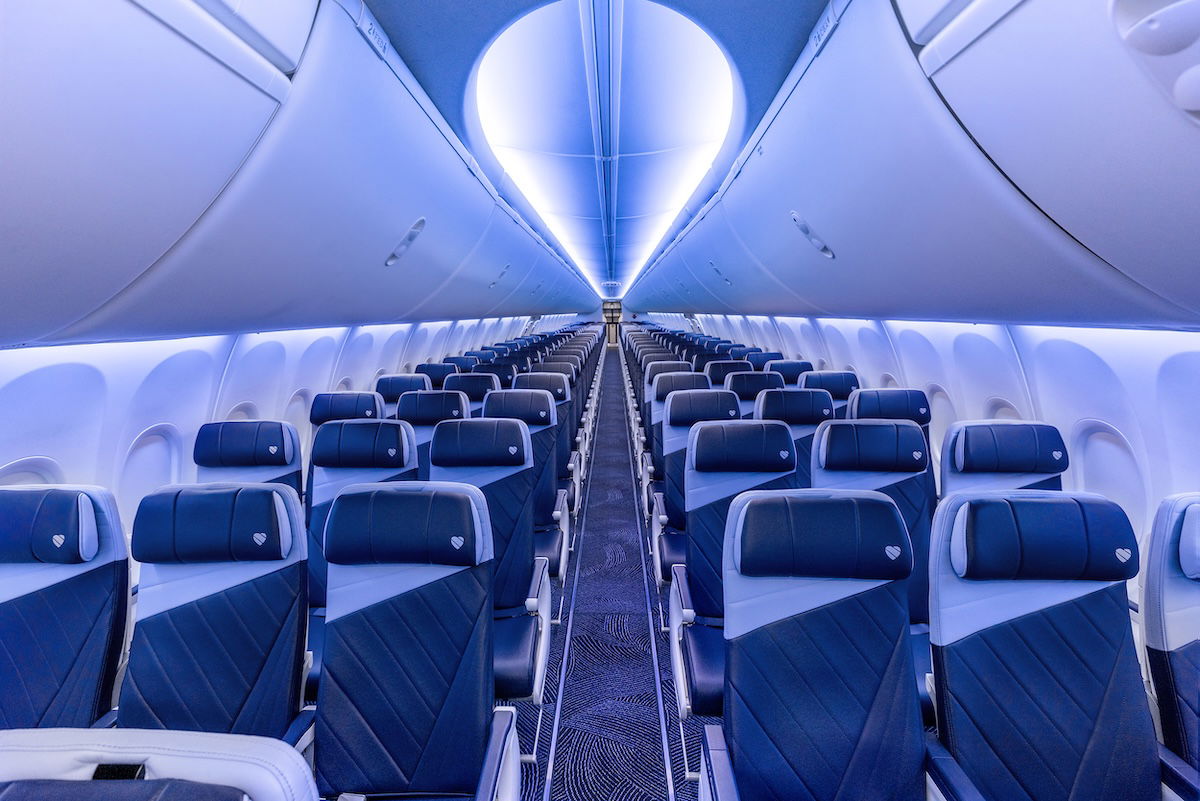
Bottom line
Southwest Airlines is introducing assigned seating on all flights, and also plans to introduce a premium seating option, with extra legroom. Tickets under this new model are now on sale, for flights as of January 27, 2026.
This evolution at Southwest was bound to happen, given the carrier’s current financial performance. I’d say the implementation of this new model is roughly what we were expecting, though we’ll see how it evolves over time.
What do you make of Southwest introducing assigned and premium seating?







